Search the Special Collections and Archives Portal
Search Results
Donn Blake oral history interview
Identifier
Abstract
Oral history interview with Donn Blake conducted by George Kostic on April 17, 1980 for the Ralph Roske Oral History Project on Early Las Vegas. Blake discusses his role as a Special Projects Coordinator for the City of Las Vegas, Nevada and the various roles he held in historical preservation. Blake also discusses how Las Vegas has grown and evolved over the years. He describes the changes in airport locations over time and mentions the need for historical preservation.
Archival Collection
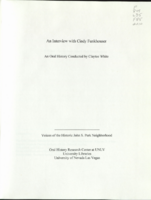
Transcript of interview with Cindy Funkhouser by Claytee D. White, January 14, 2010
Date
Archival Collection
Description
Text

Transcript of interview with Timothy Harney by Claytee D. White, June 12, 2010
Date
Archival Collection
Description
Text
Adla Earl oral history interview
Identifier
Abstract
Oral history interview with Adla Earl conducted by Suzanne Becker on May 20, 2009 for the Voices of the Historic John S. Park Neighborhood. In this interview, Earl discusses her upbringing in Las Vegas, Nevada and living in the John S. Park neighborhood. She remembers purchasing her home, the influence and increase of the LGBTQ+ population in the area, and the historic designation of the neighborhood. Lastly, Earl talks about changes in the neighborhood.
Archival Collection
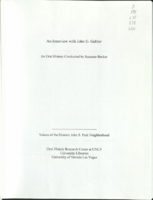
Transcript of interview with John G. Gubler by Suzanne Becker, December 29, 2008
Date
Archival Collection
Description
Text
Kathleen Harney oral history interview
Identifier
Abstract
Oral history interview with Kathleen Harney conducted by Claytee White on July 19, 2010 for the Voices of the Historic John S. Park Neighborhood Oral History Project. In her interview Harney discusses her and her husband's move to the historic John S. Park Neighborhood in 1975, about ten years after moving to Las Vegas from Ohio. Kathleen also discusses her career as a high school teacher and teaching English and journalism.
Archival Collection
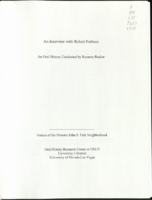
Transcript of interview with Robert Forbuss by Suzanne Becker, February 12, 2009
Date
Archival Collection
Description
In 1944, Robert Forbuss' mother bought a home in a new tract development called Huntridge, adjacent to the John S. Park Neighborhood. She was a single woman who had managed to put together the down payment from her earnings as a cocktail waitress. A couple years later John S. Park Elementary School was built nearby. Through any ups and downs, Marjorie Forbuss refused to live anywhere else for the rest of life, even when Robert encouraged her to move. For this interview, Robert intersperse Las Vegas history while sharing childhood memories of the neighborhood. He graduated from Bishop Gorman High School, the private Catholic prep school, in the mid-1960s. A few years later, Robert returned there as a teacher from 1973 - 1981, teaching kids with familiar last names in the neighborhood he had grown up in. During that time he lived in the John S. Park Neighborhood. He details the charm of the neighborhood, cruising the Downtown area, shopping on Fremont Street and much more. When Robert left teaching, he became the general manger of Mercy Ambulance and Medical Supply, which he ultimately owned until about 2003. During this time, he was a successful business leader and an active community member.
Text
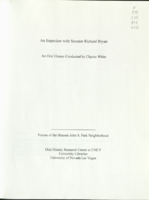
Transcript of interview with Senator Richard Bryan by Claytee White, February 19, 2009
Date
Archival Collection
Description
Text
Kim Bavington oral history interview
Identifier
Abstract
Oral history interview with Kim Bavington conducted by Claytee White on July 15, 2010 for the Voices of the Historic John S. Park Neighborhood Oral History Project. In this interview Bavington discusses moving from a gated community to a Mid-Century Modern ranch house in the historic John S. Park Neighborhood. She also reflects on various Las Vegas, Nevada locations where she resided including Francisco Park, Spring Valley, and Green Valley.
Archival Collection
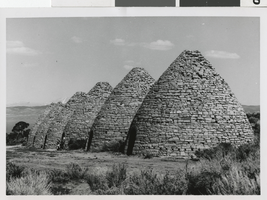
Photograph of Ward charcoal ovens, White Pine County, Nevada, 1960-1961
Date
Archival Collection
Description
Image
